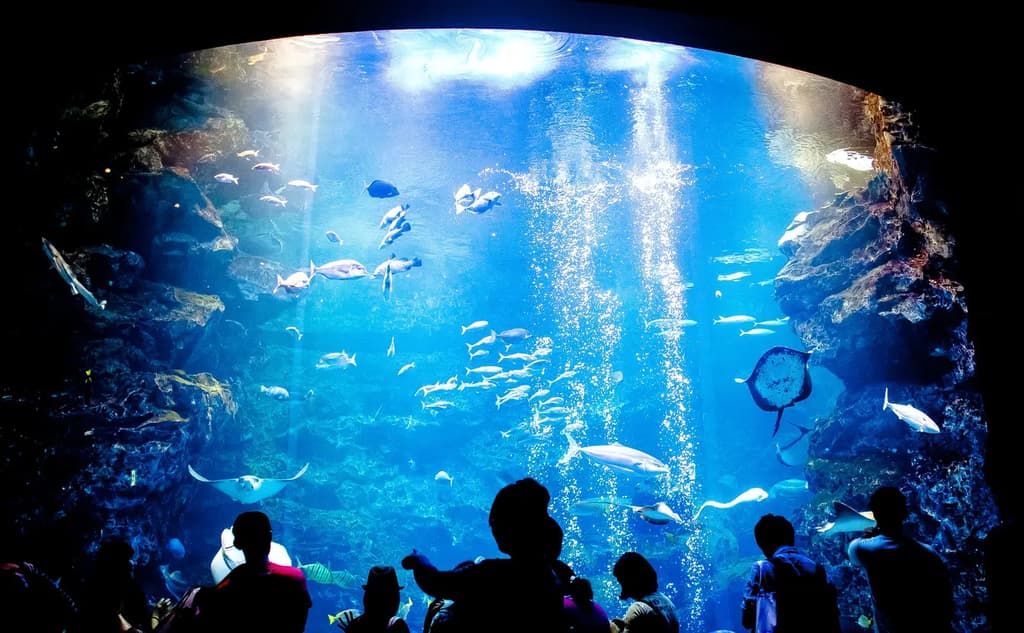During your trip, the weather often turns rainy. Especially in Kyoto, where there are many outdoor tourist attractions such as temples, shrines, and Japanese gardens, it is quite difficult to change plans.
This article introduces 19 such indoor facilities for rainy days! We will introduce indoor facilities based on various themes, please refer to this article!
To learn more about Kyoto, click here.
4 commercial facilities directly connected to the station
Nidec Kyoto Tower(ニデック京都タワー)
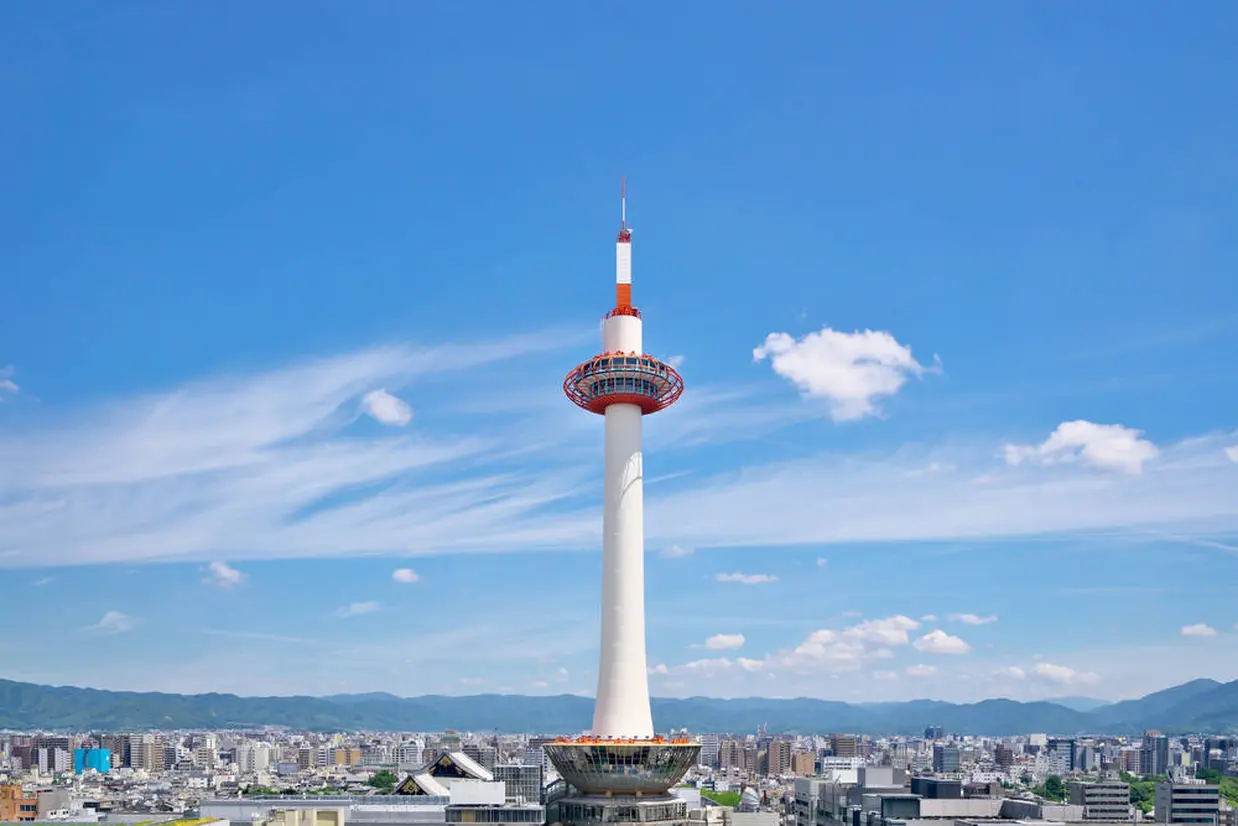
Kyoto Tower is a 131-meter observation tower built on the roof of the building in front of JR Kyoto Station. It is accessible from Kyoto Station via an underground passageway without going outside.
The tower’s graceful appearance was inspired by the image of a lighthouse illuminating the city of Kyoto. The observation deck is 100 meters above the ground and offers a panoramic view of the city of Kyoto, the surrounding shrines and temples, and the 36 peaks of Higashiyama. There is a hotel, restaurants, and a spot to purchase souvenirs.
There are also stores where you can try your hand at making Japanese sweets and learning how to make sushi, and we recommend experiencing Japanese culture here while visiting the station. For those who wish to explore Kyoto in kimono, renting a kimono at the kimono rental store in the tower is very convenient!
JR Kyoto Isetan(ジェイアール京都伊勢丹)
A shopping facility directly connected to Kyoto Station. In addition to shopping for apparel, sundries, food, and souvenirs, there are also a variety of restaurants. In addition to Japanese, Western, and Chinese cuisine, you can also enjoy Kyoto-style tofu and yuba (bean curd) dishes, Japanese sweets, and more.
Most importantly, it is directly connected to Kyoto Station, making it the perfect place to go when you have a little time before or after your trip, or when you need to buy souvenirs before you go home.
Shin Puh Kan(新風館)
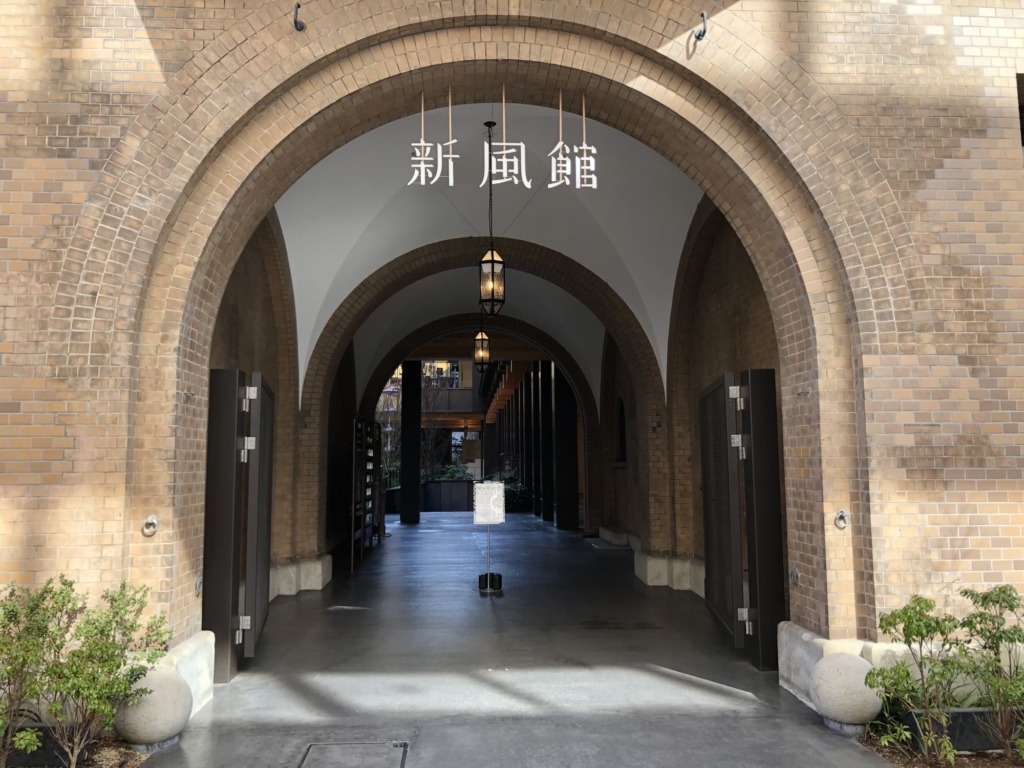
A complex facility opening in 2020 with an impressive retro brick structure directly connected to Karasuma-Oike Station. The building, which was originally the former Kyoto Central Telephone Office, was constructed as a “new building” under the supervision of architect Kengo Kuma, and part of the building remains as a “preserved building”.
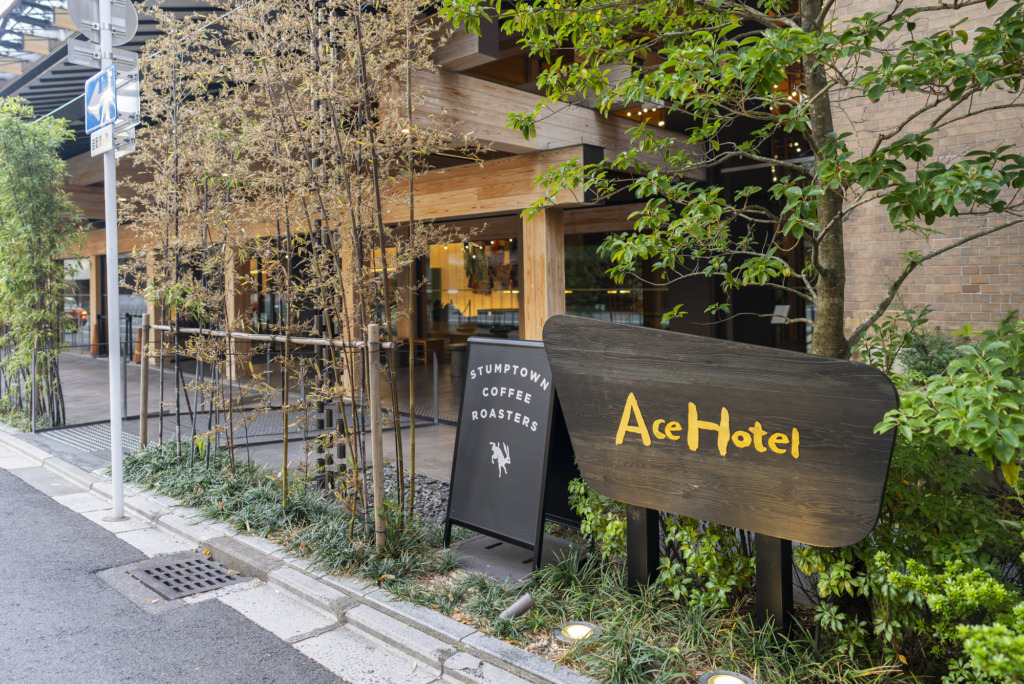
Inside the building are about 20 stores you won’t find anywhere else, including a movie theater, apparel goods, cafes, and restaurants. Another unique feature of the Shin Puh Kan is that it is also home to the Ace Hotel Kyoto, the first hotel to open in Asia. While being a progressive and fashionable complex, the greenery of the courtyard and the Japanese atmosphere make it a very comfortable spot.
SUINA Muromachi(SUINA 室町)
A fashionable commercial facility directly connected to Karasuma Station. The B1 and 1F are lined with restaurants from various countries and genres, and Japanese food is abundant. 2F is home to the Pokemon Center Kyoto, where you will be greeted by a Pikachu’s object dressed in a Kyoto-style kimono.
5 indoor facilities to enjoy with children
Kyoto Aquarium(京都水族館)
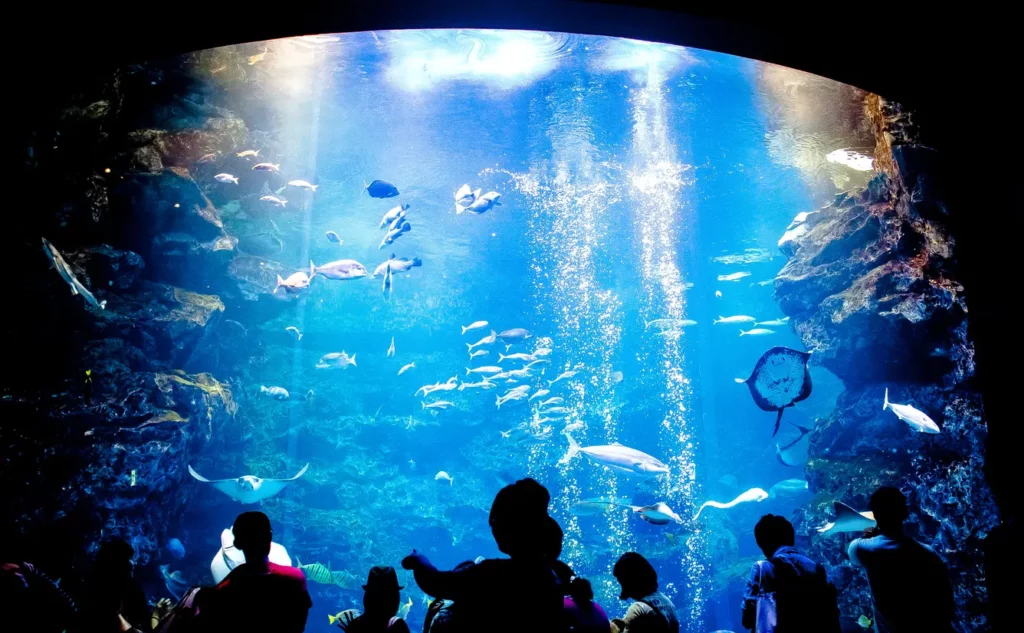
“Kyoto Aquarium” is about a 7-minute walk from Umekoji Kyoto Nishi Station. It is also about a 15-minute walk from Kyoto Station. Although there is no ocean nearby, it is one of the largest inland aquariums in Japan, where you can enjoy dolphin shows.
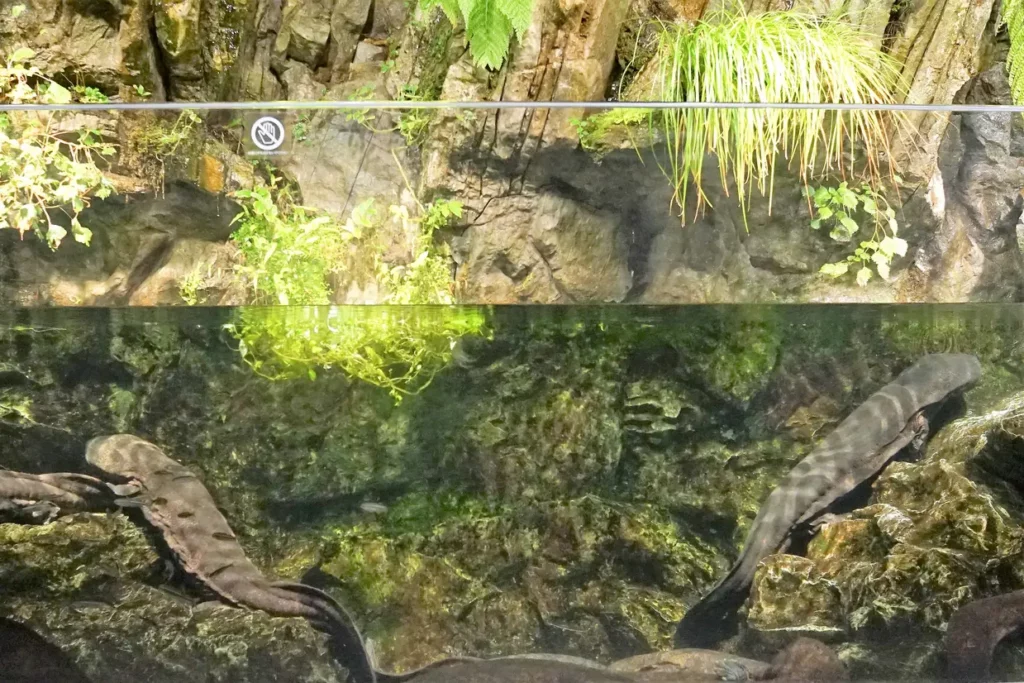
The centerpiece of the aquarium is the giant salamander, which has been designated a special natural treasure by the Japanese government. Visitors can observe the salamander, which is now considered a rarity, up close and personal.
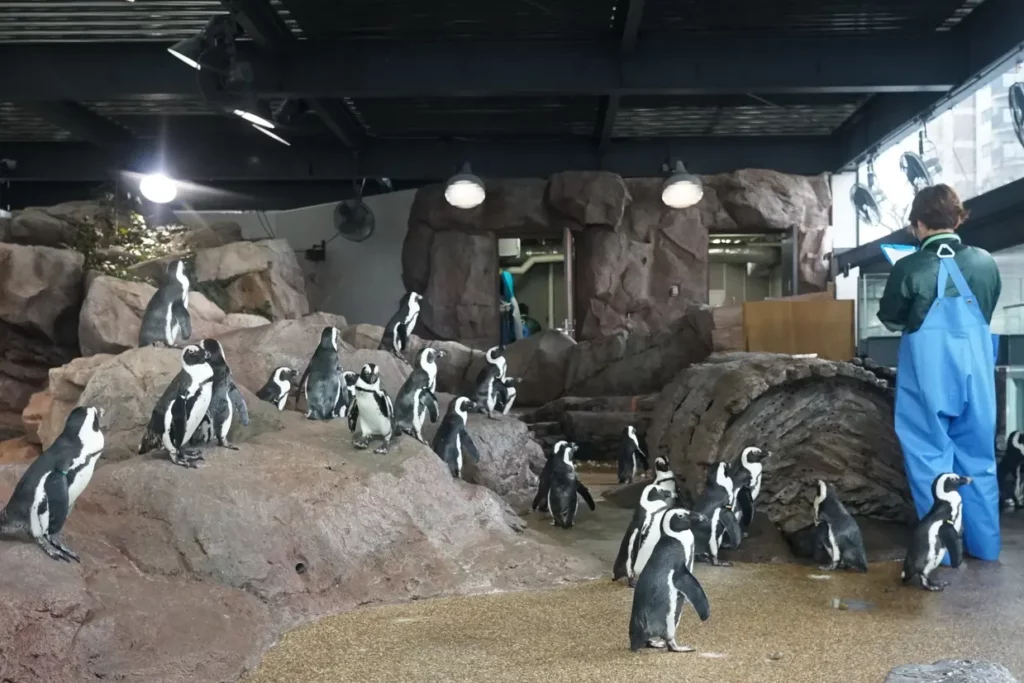
Other highlights include the “Kyoto Sea” tank, which recreates the entire sea of Kyoto, home to a wide variety of creatures, and an exhibit of the aquarium’s popular penguins.
GEAR(ギア)
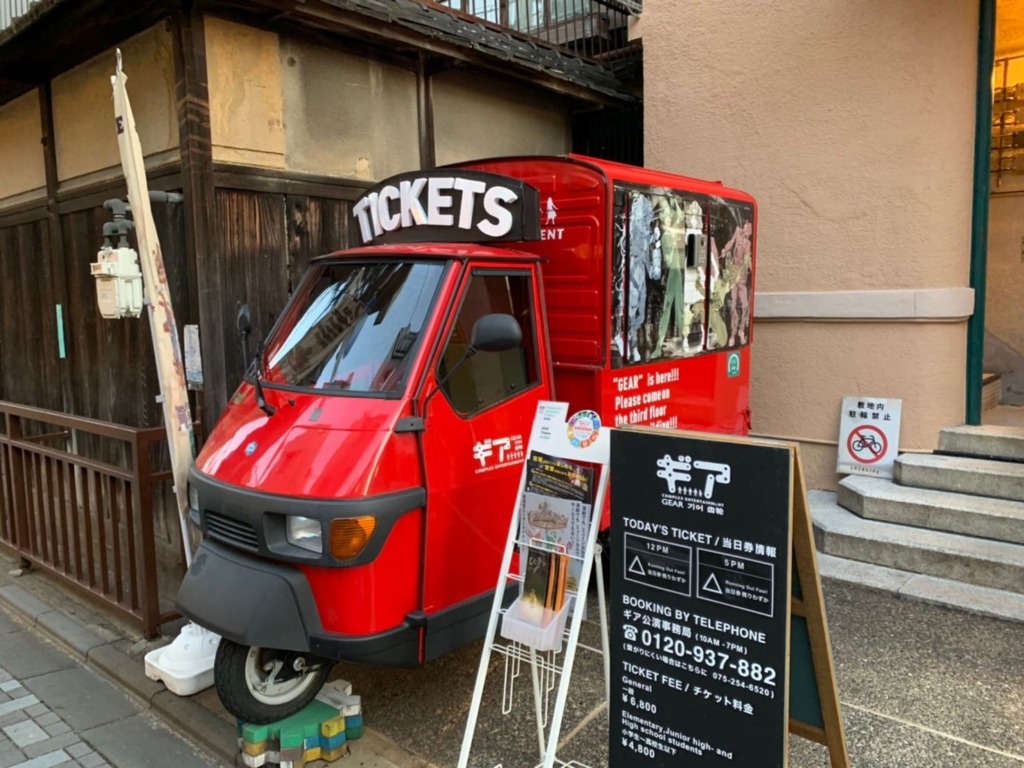
There are several ways to get to GEAR, but it takes only 5 minutes on foot from “Kyoto Shiyakusho Mae Station”. This is a new kind of wordless stage that can be enjoyed by small children and people from overseas. The storyline, set in an old toy factory, proceeds entirely without dialogue.
The absence of words is replaced by the use of light, images, dance, juggling, and other performances that deliver emotion and excitement to the audience. The facial expressions and gestures of the performers on the realistic stage set are also a must-see. Tickets can be purchased on the official website, so if you are interested, please check it out.
Official website: https://www.gear.ac/en/
Kyoto Railway Museum(京都鉄道博物館)
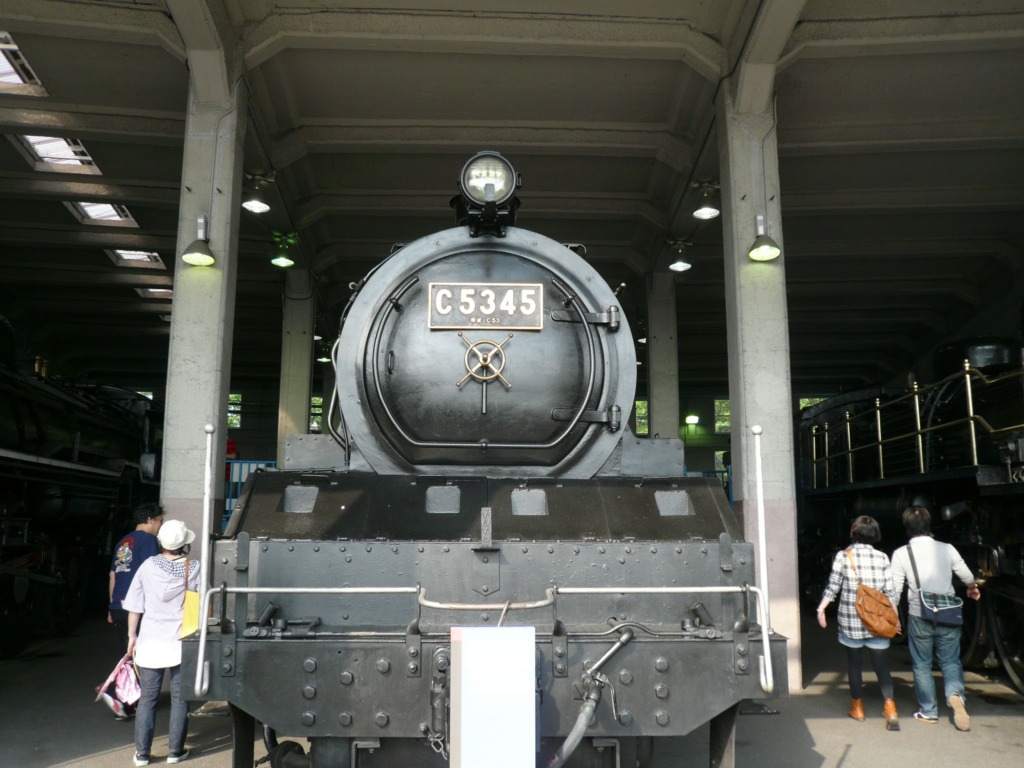
For those who are interested in Japanese trains, the “Kyoto Railway Museum” is recommended! It is only a 2-minute walk from Umekoji Kyoto Nishi Station, and a 20-minute walk from Kyoto Station.
From steam locomotives to bullet trains, this facility is a must-see for railroad enthusiasts, with exhibits of valuable rolling stock, a driving simulator experience, and a steam locomotive garage.
Kyoto International Manga Museum (京都国際マンガミュージアム)
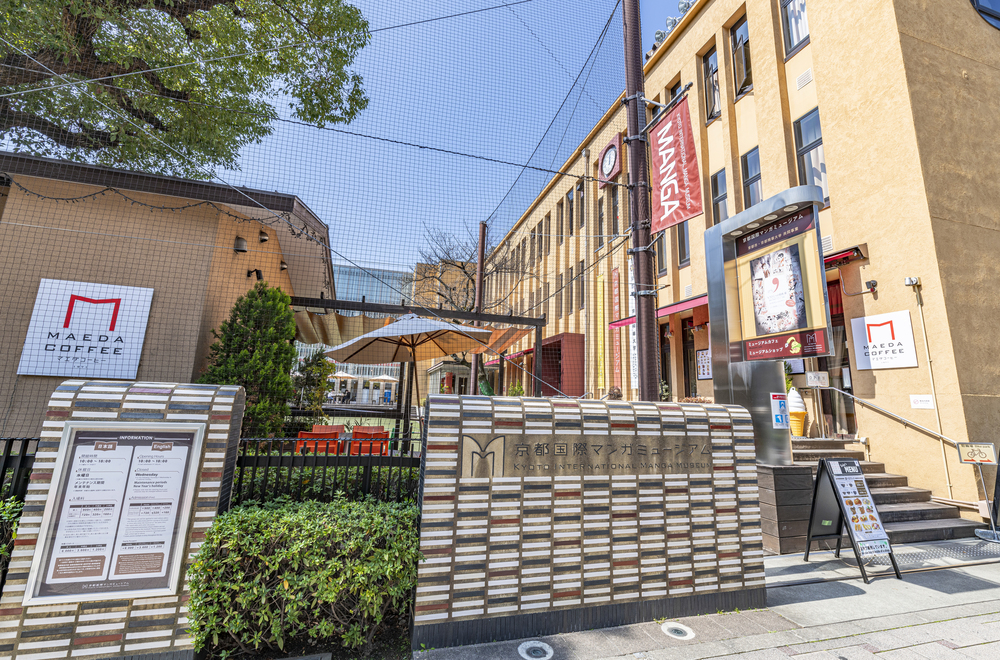
A two-minute walk from Karasuma-Oike Station, this facility collects, preserves, exhibits, researches, and studies manga. When it comes to preservation and exhibition, one might imagine historical materials on display, but here, 50,000 of the 300,000 manga in the collection are available for free reading. Moreover, visitors can bring them to the grassy area outside the building and lie down to read them.

The “Manga Expo” corner features Japanese manga translated into English, French, Thai, and other languages, as well as comics published overseas. It is a great place to enjoy manga even if you cannot read Japanese. In addition, on Saturdays and Sundays, workshops for drawing portraits and manga are held, offering a variety of experiences.
Nintendo Museum(ニンテンドーミュージアム)
In fact, Kyoto is the birthplace of the famous video game company “Nintendo” and has been the location of its headquarters since its establishment. Nintendo is planning to build a “Nintendo Museum” on the site where the company’s factory was originally located. The museum was scheduled to be completed in March 2024, but the schedule has been extended a little and it is expected to be completed in summer!
Not many details have been released yet, but Nintendo products released to date will be on display. This is sure to be a must-see facility for fans.
3 experience-based facilities
SAMURAI and NINJA MUSEUM with EXPERIENCE (サムライ忍者体験ミュージアム)

The Samurai Ninja Experience Museum, a two-minute walk from Kawaramachi Station.It is an activity museum that not only exhibits antiques, but also allows visitors to actually wear armor, the costume of the samurai, and experience shuriken throwing as a ninja.
The basic plan includes a guide who explains the history of samurai and ninja, and a samurai and ninja experience. For those seeking a more authentic experience, there is also a special plan that includes ninja training in ninja costumes and specialized techniques, as well as basic swordsmanship for groups to learn.
mipig cafe Kyoto(mipig cafe 京都店)
Located a 3-minute walk from Kyoto Kawaramachi Station, this café allows visitors to interact with micro pigs. The cute brown, white, and black micro pigs have friendly personalities. They are mild-mannered, so there is almost no need to worry about being bitten. The micro pigs will come right up to you and sit on your lap, making you feel very relaxed.
You can choose a course from 30 minutes to 180 minutes, and the cafe includes free drinks from vending machines. Reservations can be made through the official website.
Official website: https://mipig.cafe/en/locations/kyoto/
Fukujuen Uji Kobo(福寿園宇治工房)
Fukujuen Uji Kobo, a 7-minute walk from Uji Station, is a Uji tea experience facility by Fukujuen, a long-established Uji tea company. The facility includes a workshop where visitors can experience a variety of programs, a restaurant where visitors can take a break and enjoy tea-related meals, and a sales area where visitors can purchase tea-related tools. Visitors can spend a whole day at the facility and never get bored.
Official website: https://www.ujikoubou.com/en/
3 Museums
Kyoto National Museum (京都国立博物館)
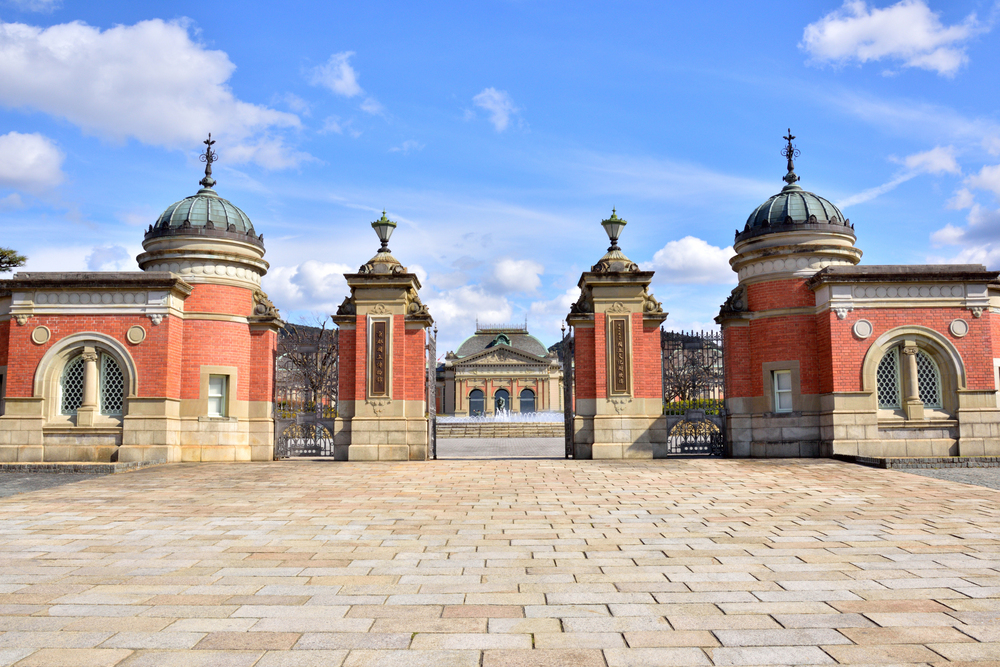
The Kyoto National Museum is a 7-minute walk from Shichijo Station and is located across the street from Sanjusangendo. Access from Kyoto Station is convenient by bus.
It is a national museum that promotes the display, preservation, and research of tangible cultural properties, mainly in Kyoto. The museum’s regular exhibits are displayed in galleries organized according to the fields of ceramics, archaeology, painting, calligraphy, crafts, and sculpture, and include a mix of items from the museum’s collection and items that have been entrusted to the museum. Periodically, the museum also holds large-scale special exhibitions, during which time the regular exhibits are closed.
The Kyoto National Museum is a fascinating building in itself. The Meiji Kotokan Hall, with its beautiful red brick walls, is a valuable building that has been designated as an important cultural property. The Heisei Chishinkan Wing, which was recently constructed, has a linear exhibition space and an open lobby. A garden extends across the grounds, and cultural assets are also displayed outdoors.
Kyoto City Kyocera Museum of Art (京都市京セラ美術館)
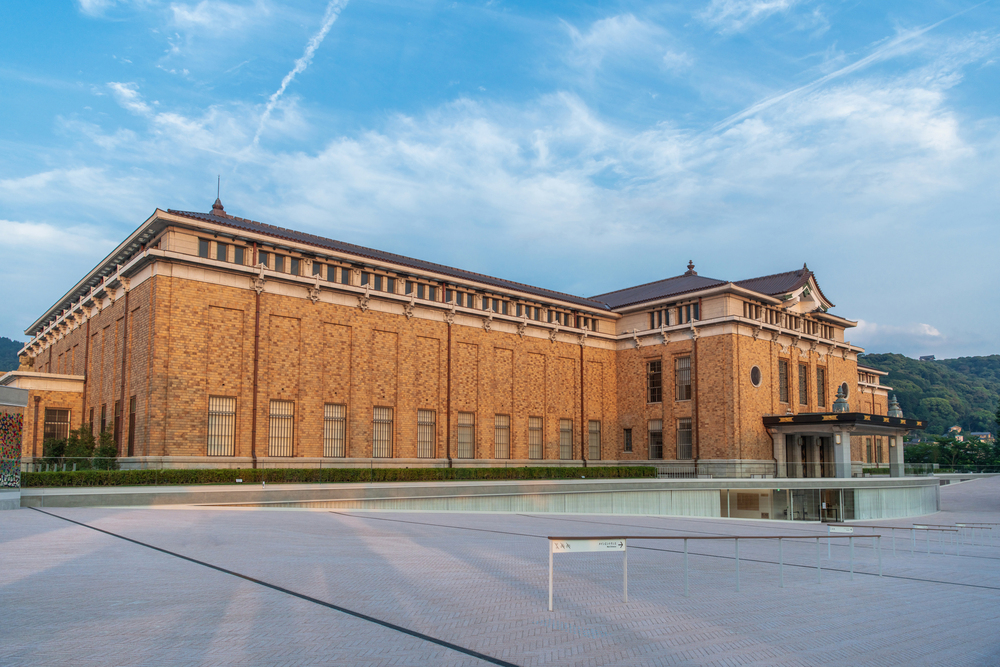
The Kyoto City Kyocera Museum of Art, located about an 8-minute walk from Higashiyama Station. It was created in 2020 after the renovation of the Kyoto Municipal Museum of Art. The building, in which modern design was added while preserving the historic architectural design to the maximum extent possible, is attracting attention for its modern beauty. Many areas of the museum are open to the public free of charge, allowing visitors to enjoy the building even if they do not appreciate art.
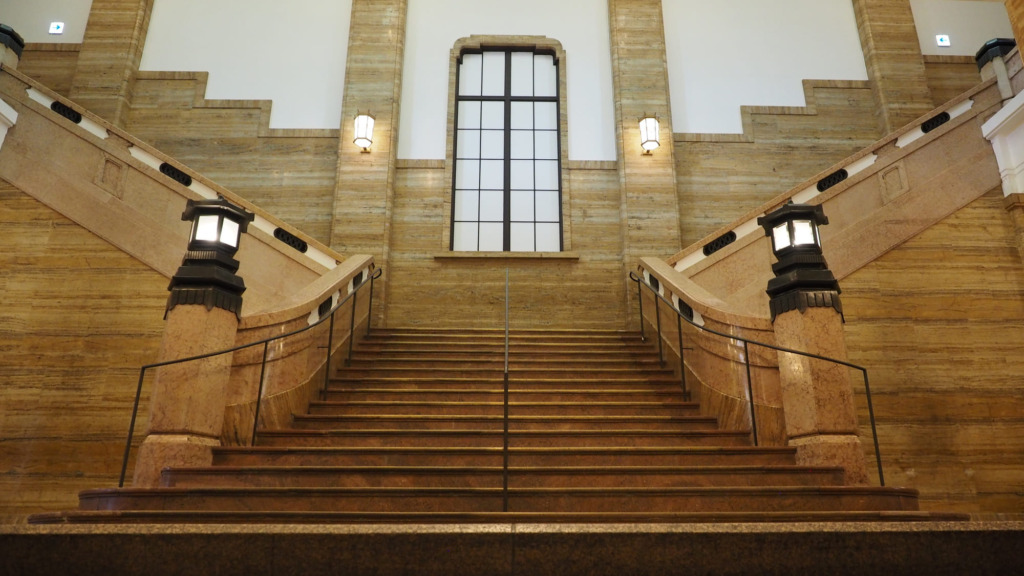
The exhibits will present art from various periods and genres that embody “Kyoto,” an evolving city where tradition and innovation intersect. There is also a relaxation plaza that will be used for performances, events, and other outdoor activities, offering a variety of experiences.
The National Museum of Modern Art, Kyoto (京都国立近代美術館)
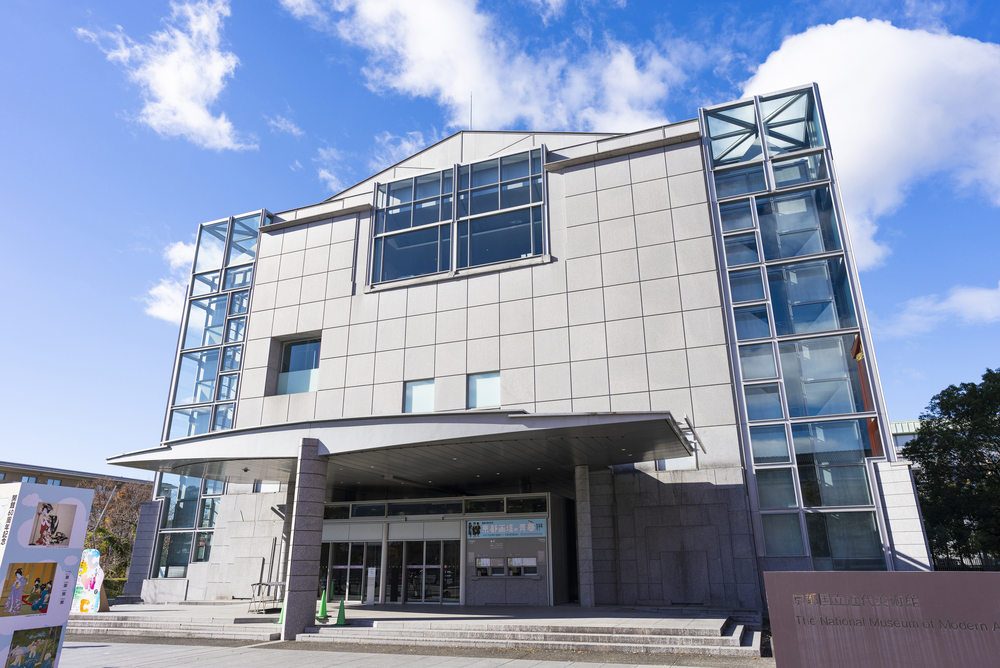
The National Museum of Modern Art, Kyoto, a 10-minute walk from Higashiyama Station. It is located in an area where cultural facilities such as Heian-jingu Shrine, Okazaki Park, Kyoto Museum of Crafts and Design, Kyoto City Kyocera Museum of Art, and Kyoto Zoo are concentrated.
With an emphasis on art from Kyoto and other parts of western Japan, the collection includes a wide range of Japanese and Western-style paintings, prints, sculptures, and photographs, in addition to ceramics, dyeing and weaving, metalwork, wood and bamboo crafts, jewelry, and other artifacts. In addition to holding special exhibitions about five times a year, the Collection Gallery holds collection exhibitions in conjunction with special exhibitions. This is a museum you will want to visit regularly.
4 facilities related to Kyoto’s culture and history
Kyoto Museum of Crafts and Design(京都伝統産業ミュージアム)
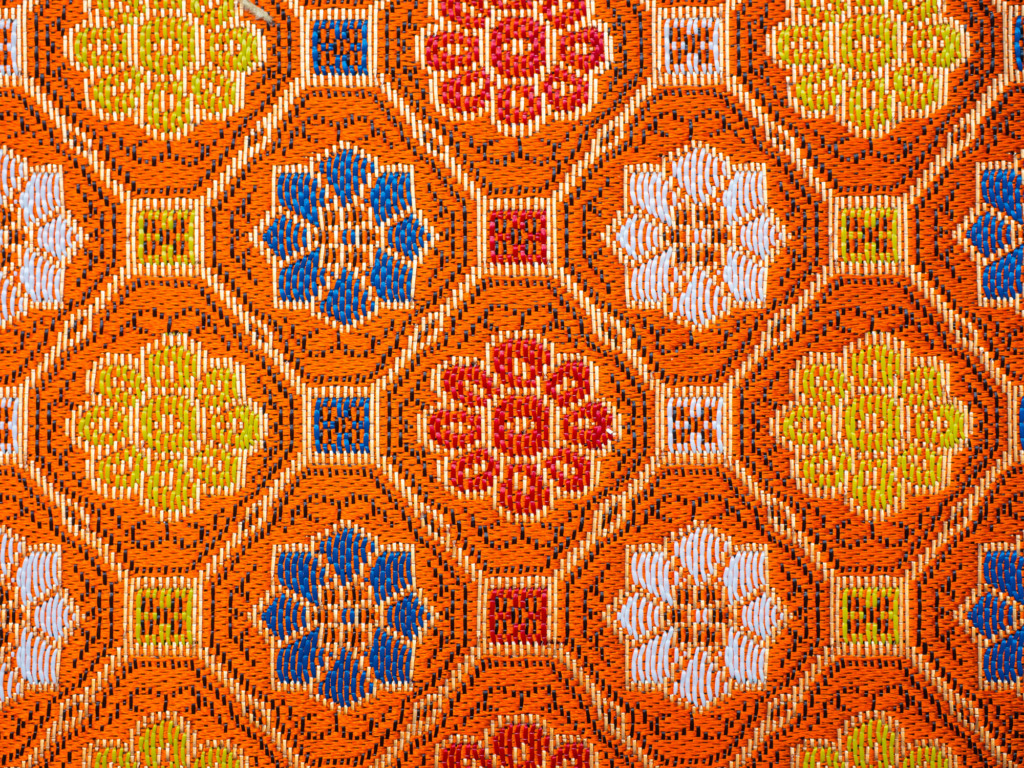
The Kyoto Museum of Crafts and Design exhibits Kiyomizu Potterys, Nishijin textiles, and other traditional Kyoto crafts. It is a 10-minute walk from Higashiyama Station.
In addition to explanations and production processes of various crafts being introduced through materials and videos, there is also a hands-on corner where visitors can actually try their hand at making the crafts. There is also a “craft demonstration” where visitors can see the actual production process of traditional crafts such as Kyo-yuzen-dyeing and Kyo-shikki (Lacquerware). This is a rare opportunity to see the skills of craftspeople in action. Please check the official website for the schedule.
Official website: https://kmtc.jp/en/events-en/demonstration/
The Museum of Kyoto (BUNPAKU) (京都文化博物館)
The Museum of Kyoto, a 3-minute walk from Karasuma-Oike Station, is a museum where visitors can learn about the history and culture of Kyoto. In the general exhibition room, visitors can learn about the flow of Kyoto’s history from the Heian period to the Showa period (about 794-1989) through documents and videos. There is also a film theater in the museum, where you can watch classic movies from the past.
Visitors can enjoy dining and shopping in the Rouji Store, which is designed to resemble a machiya (townhouse) from the late Edo period (1603-1868) in Kyoto. The distinctive red-brick annex is the building of the former Bank of Japan, Kyoto Branch, and is designated as a National Important Cultural Property.
Nishijin Textile Center(西陣織会館)

At the Nishijin Textile Center, a 10-minute walk from Imadegawa Station, visitors can easily experience the fascination of Nishijin textiles through exhibits explaining the history of Nishijin textiles and demonstrations by craftspeople.
Nishijin textile is a traditional textile produced mainly in Kyoto. It is known as a high quality textile because it is made through many processes by craftsmen. There are also hands-on courses such as wearing a kimono and weaving by hand, though reservations are required. This is a rare opportunity to experience the charm of Nishijin textiles, so if you are interested, please check the official website.
Official website: https://nishijin.or.jp/eng/
Minamiza Theatre (南座)
The Minami-za Theater, located just outside Gion-Shijo Station.It is the oldest theater in Japan, believed to have been around since the Edo period. Designated as a Tangible Cultural Property of Japan, it underwent renovation in 2018 and was reborn as a place where tradition and new charms merge.
Although only theater-goers are allowed to enter the theater, the classical and artistic design of the building makes it an enjoyable space just to look at the building. Kabuki, a traditional Japanese theater, is mainly performed here. There is also an English subtitle guide service, so you can understand the content even if you do not understand Japanese.
